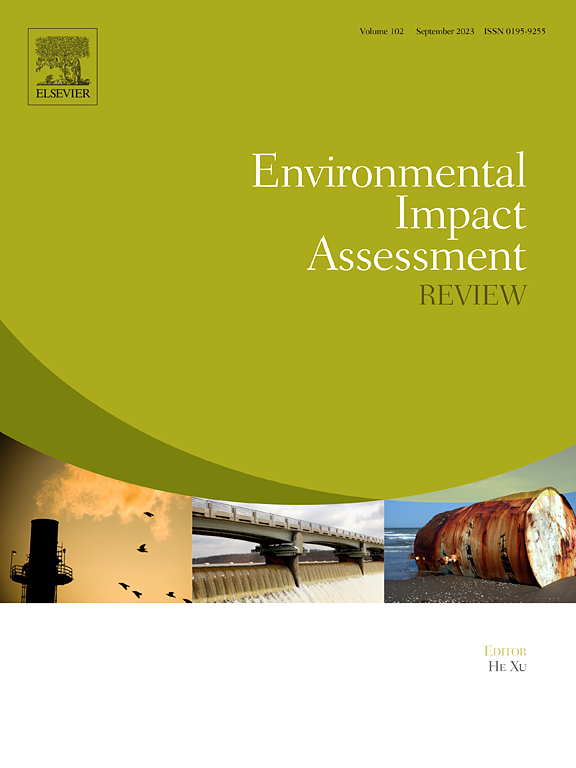怎样才能阻止地雷呢?加拿大努纳武特的土著干预和项目拒绝
IF 11.2
1区 社会学
Q1 ENVIRONMENTAL STUDIES
引用次数: 0
摘要
反对采掘项目的土著群体使用了一系列战术和战略,包括干预影响评估过程。本文审查了四个案例,其中IA当局建议反对在加拿大努纳武特开发拟议的矿山。通过将这些案例与推荐批准的项目评估进行比较,我们试图得出关于可能导致项目被拒绝的不同类型干预措施的广泛结论。根据对评估和媒体文件的分析,我们发现努纳武特地区的矿产资源委员会在土著群体对矿产资源进行技术、程序和政治干预时,当土著权利组织在最终听证会上表达了大量突出的关切时,当该地区已经有一个正在运营的矿山时,建议不要批准项目。这些发现为将IA作为开采合法化工具的批评增添了细微差别。在努纳武特这样的情况下,内部审查程序实质上承认土著权利并授权土著代表,因此,拥有权利的团体的参与可能更有可能影响内部审查的结果。本文章由计算机程序翻译,如有差异,请以英文原文为准。
What does it take to stop a mine? Indigenous interventions and project rejection in Nunavut, Canada
Indigenous groups who oppose extractive projects make use of a range of tactics and strategies, including intervening in impact assessment (IA) processes. This article examines four cases where IA authorities recommended against the development of proposed mines in Nunavut, Canada. By comparing these cases to the assessment of projects recommended for approval, we seek to draw broad conclusions about the different types of interventions that can potentially lead to project rejection. Based on an analysis of assessment and media documents, we found that Nunavut's IA Board recommended against project approval when Indigenous groups made technical, procedural, and political interventions within and alongside IA, when Indigenous rights-bearing organizations expressed substantial outstanding concern at the final hearing, and when there was already an operating mine in the region. These findings add nuance to critiques of IA as a tool for legitimizing extraction. In contexts like Nunavut – where IA processes substantially recognize Indigenous rights and mandate Indigenous representation – participation by rights-bearing groups may be more likely to influence IA outcomes.
求助全文
通过发布文献求助,成功后即可免费获取论文全文。
去求助
来源期刊

Environmental Impact Assessment Review
ENVIRONMENTAL STUDIES-
CiteScore
12.60
自引率
10.10%
发文量
200
审稿时长
33 days
期刊介绍:
Environmental Impact Assessment Review is an interdisciplinary journal that serves a global audience of practitioners, policymakers, and academics involved in assessing the environmental impact of policies, projects, processes, and products. The journal focuses on innovative theory and practice in environmental impact assessment (EIA). Papers are expected to present innovative ideas, be topical, and coherent. The journal emphasizes concepts, methods, techniques, approaches, and systems related to EIA theory and practice.
 求助内容:
求助内容: 应助结果提醒方式:
应助结果提醒方式:


